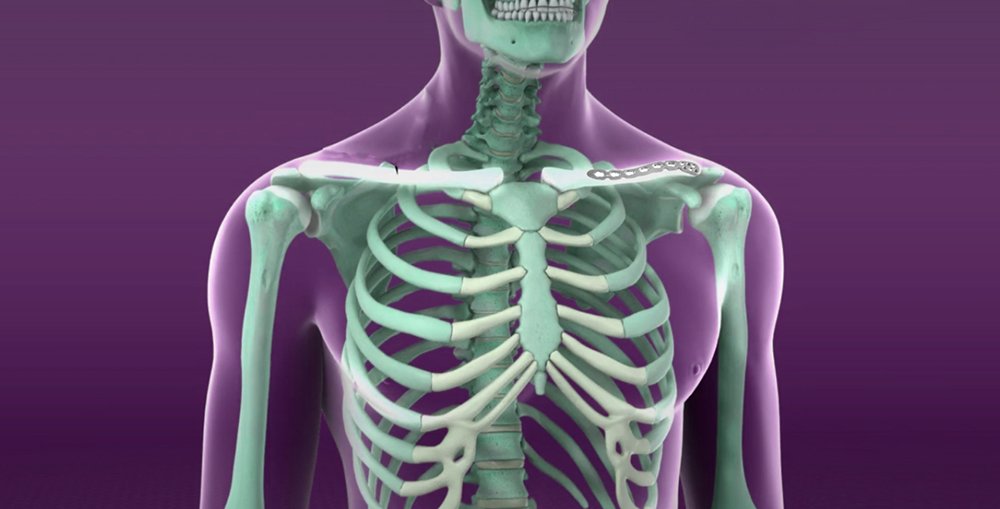Clavicle (collarbone) fractures are quite common injuries. If considerable displacement and angle of a clavicle fracture isn’t there, then a sling can treat it within six weeks. For persons who do a lot of desk work, a ‘figure-8’ brace that leaves the arms free is most popular.
If a clavicle fracture is shortened 1.5 cm or more, considerably displaced (so that there is no bony contact), considerably angled (bent), or comminuted (in several parts), then it will probably be better if it’s surgically repaired (with the use of orthopedic implants), especially in an active person. If the clavicle fracture can heal in a shortened, otherwise unsatisfying condition, shoulder pain, decreased endurance, stiffness, dysfunction, and weakness can occur, especially while overhead activities or activities requiring shoulder strength.
And once a clavicle fracture is cured in a shortened or otherwise unacceptable position, the shoulder muscles and shoulder blade may contract and become permanently too short, or stretch to become permanently too long, depending on how the clavicle fracture cured. This may result in a loss of endurance and permanent weakness, even if the clavicle fracture is treated later. Like most injuries, the most effective chance to get a good result is early after the injury occurs.
The surgeon will do the surgical restoration of a clavicle fracture as an outpatient, same-day, surgery. The most effective way to fix the most severe clavicle fractures is by utilizing specially molded orthopedic bone plates that adjust to the clavicle. After surgery, one can do deskwork and computer use the next day. Bath Shower is fine three days after surgery, at which point wrist, elbow, and hand motion may start. One should avoid active use of the shoulder for 4 to 6 weeks. During that time, it is important to wear a sling publicly for protection. Clavicles usually take three months to heal. The healthcare service provider usually orders ACT (cat) scan 6 to 12 weeks after surgery to make sure that the bone healing is proper.
The surgical intervention requires various specialized orthopedic instruments that one can ge from the manufacturer of Orthopedic Equipment Manufacturers. Most patients often do very well after clavicle fracture repair.
Smoking significantly increases the risk of clavicle fracture not healing (i.e. going on to ‘non-union’).
An unhealed clavicle fracture (clavicle non-union), is a more tough problem to fix. Clavicle non-unions often involve a point of shortening and deformity, which can be difficult to completely correct. In order to fix a clavicle non-union, it is usually essential to take bone from the iliac crest. Taking bone graft from the iliac crest is somewhat painful. However, with newer orthopedic instruments one can use minimally invasive technique for this. The use of a specialized plate is to stabilize the clavicle non-union. Nearly 3-4 months after surgery, the healthcare service provider will order a CT scan to confirm that the clavicle non-union has cured.
In conclusion, most clavicle fractures often do not need surgical fixation. But, when they do, modern orthopedic equipment and techniques help produce an excellent outcome in the majority of cases.
The orthopedic implants and instruments used in clavicle fracture are provided by the Siora Surgicals Pvt. Ltd. Our catalog of Helix Locking Plate System includes these implants and instruments. The use of locking superior anterior clavicle plate, locking clavicle hook plate, locking anterior clavicle plate ‘S’ shape, locking head screw 2.7 mm, and locking head screw 3.5 mm are in the treatment of clavicle fracture.







